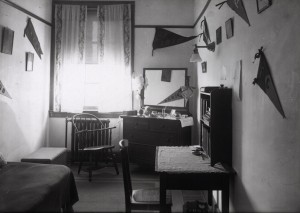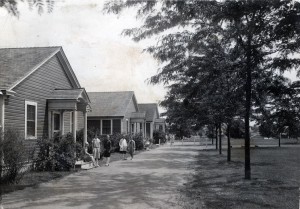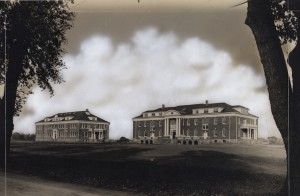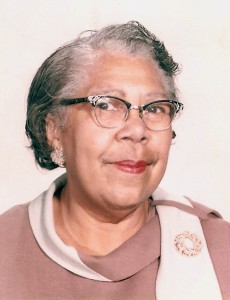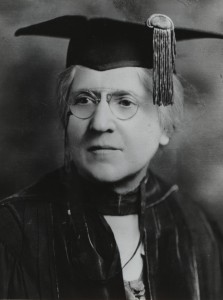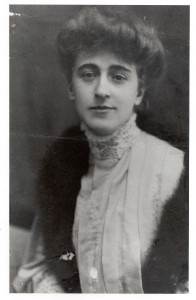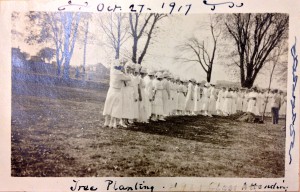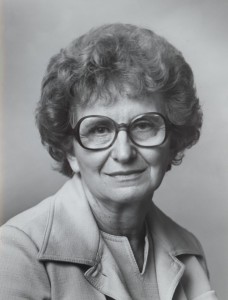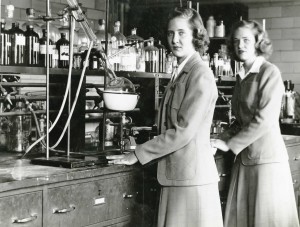
Dot and Katheryne Levis as graduate students in chemistry at UD in the early 1940s. Image courtesy of Special Collections, Morris Library
In 1944, the first female graduate students Dorothy (Dot) and Katheryne Levis arrived in Newark to begin work on their Master’s degrees, having received fellowships. Born in 1922, Dot and Katheryne graduated with honors from Eastern High in Baltimore, Maryland and attended the Women’s College of the University of North Carolina where they majored in chemistry (Katheryne Crook Levis McCormick). At The University of Delaware, the twins studied in the Plastics Research Laboratory under Dr. Elizabeth Dyer. For their Masters’ theses they wrote on the Fundamental Problems in High Polymer Chemistry. While at UD, Katheryne and Dot met former roommates and history professors Dick McCormack and John Munroe whom they later married (Katheryne to Dick and Dot to John) the summer after receiving their degrees. Following graduate school, Katheryne started a family with Dick which she balanced with her career teaching chemistry and math at Douglass College and her volunteer work as a political advocate. (Katheryne Crook Levis McCormick). Dot also juggled a fulltime career as she had three children with John while teaching high school math (To Work Or Not To Work).
In the time since Katheryne and Dot attended, the number of graduate students at the University of Delaware has grown exponentially, with approximately 3,600 today. One current student in particular we want to highlight as a true Blue Hen is Tatiana Ausema. Tatiana graduated from the University of Delaware’s art conservation programs with a Bachelor degree in 2000 and her Master’s degree in 2003. Graduating with a specialization in paintings and modern materials, she then went on to work for the Smithsonian Institution as a researcher and conservator. Since 2006, she has worked for the Hirshhorn Museum in the collection department, but she is also working on her doctorate in Preservation Studies at UD. She is hoping to defend her dissertation in May 2015 on the “Working Methods and Materials of Color Field Painter Morris Louis” (Tatiana Auesema), and she has accepted a new job as a Program Officer at the National Endowment for the Humanities, replacing Laura Word. Tatiana is a thoroughly modern student, married and a mother of two young girls, working and juggling her dissertation too! This would have been extremely difficult when Dot and Katheryne were students and it is no easy task even now!
Also check out the Double Del couple who graduated in the summer of 2014! http://www.cas.udel.edu/news/Pages/double-physics-doctorates.aspx
By Deanna Webb (University Studies Freshman), Kate Horning (Art Conservation Freshman), and Riley Thomas (Art Conservation Honors Freshman)
Works Cited
Blaszczyk, Regina Lee. University of Delaware Chemical & Biomolecular Engineering: 100 Years of Innovation: A Legacy of Pedagogy & Research. Newark, DE: U of Delaware, 2014. Print.
“Katheryne Crook Levis McCormick.” Www.munroe.ws. N.p., 5 Dec. 2011. Web. 31 Oct. 2014.<http://munroe.ws/Levis_Katheryne_Crook/KatheryneCrookLevisMcCormick.html>.
“Tatiana Ausema.” Art Conservation at the University of Delaware. University of Delaware, Web. 14 Oct. 2014. <http://www.artcons.udel.edu/doctorate/current-projects/tatiana-ausema>.
“To Work or Not To Work.” The University of North Carolina at Greensboro (n.d.): 10. Www.munroe.ws. Web. 31 Oct. 2014.



